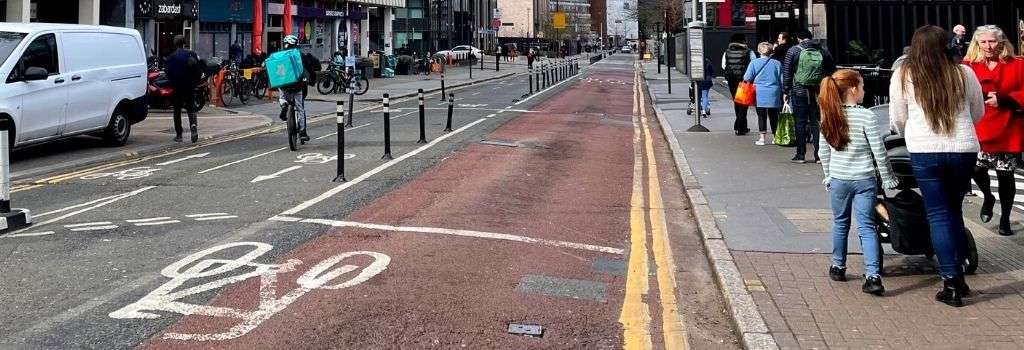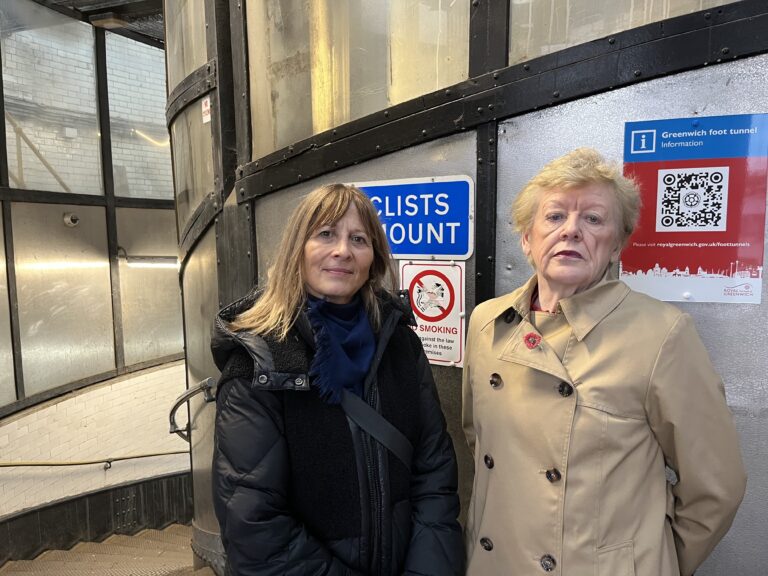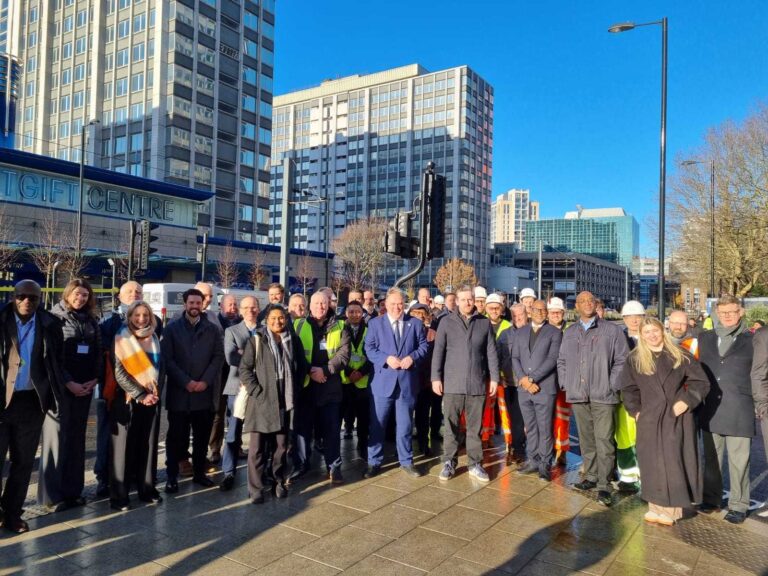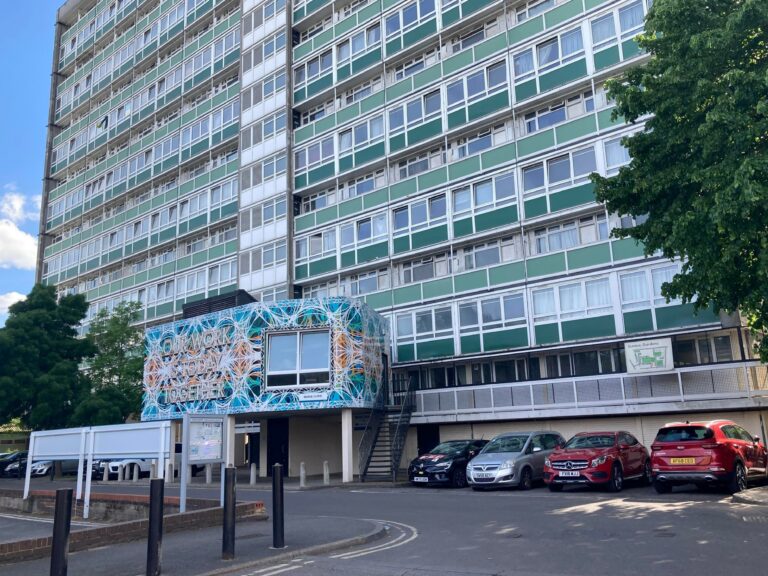A controversial cycle lane revealed to endanger cyclists and motorists alike is to be ‘fixed’ and made permanent. This comes following an “experimentation” period, which drew a mixed response from Croydon road users.
Since the spring of 2023, Croydon’s Brighton Road has featured a cycle lane segregated by safety wands. This stretch from Bartlett Street to Purley High Street and were intended to give cyclists a safe route along the busy traffic corridor.
The review has found evidence showing that the widened cycle lane has improved conditions for cyclists and pedestrians. The road has also seen a general reduction in speed across the 12-hour period of 7am to 7pm.
However, these benefits were overshadowed by news that road safety audits found this segregation to be dangerous for road users. While the scheme is now due to become permanent, the Conservative-led Council agreed that the safety wands must first be removed.
At the Croydon Cabinet meeting last night (May 15), councillors heard how fallen wands had become trip hazards for cyclists and prevented cars from having safe spaces to stop along the road. The wands had also been blamed for causing a number of injuries along the road and in total, 458 objections were received during the public consultation period.
Councillors also heard how all three emergency services revealed that it had become difficult to conduct blue light responses along that stretch of the road. There were also reports of some Brighton Road residents being unable to receive deliveries because of the road segregation.
The consultation found that the wands made road sweeping difficult, leading to a dangerous build-up of leaves and debris in the cycle lanes. Councillor Scott Roche, Cabinet Member for Streets and Environment, told the chamber how this build-up had led to blocked gullies and localised flooding along the road.
Nick Hibberd, the Council’s Corporate Director for Sustainable Communities, confirmed the scheme will be made permanent ahead of schedule. This experimentation period was due to run until October 2024.
He added: “Light segregation to be replaced with road markings alongside the mandatory and advisory parts of the lane. We will also install buffers in some areas in the form of a minimum of half a metre wide hatch markings to separate motorised traffic from cyclists.
“This is intended to lower speed profiles, particularly along the southern section of the cycle route to improve safety for all road users.”
The Brighton Road scheme, estimated to cost around £500,000, has faced much controversy since it was first mooted in 2021. The scheme has become a political lightning rod throughout the consultation period, with all sides weighing in on the issue.
During his successful campaign to become Croydon’s first executive Mayor, Jason Perry published an e-petition calling for the Council to “Stop the Brighton Road Traffic Chaos.” In this petition, he criticised the then Labour Council’s plans to segregate the cycle lanes and said: “Labour’s candidates think these measures are “extremely welcome”, but we are calling on the Labour Council to scrap these plans.”
However, during the meeting, Perry confirmed his commitment to the scheme but insisted changes must be made to ensure “safety for all road users.” It was also confirmed that TfL funding is likely to cover the costs of making the changes, estimated to be around £45,000.
Given the prevalence of concern over Croydon’s financial situation, Hibberd was keen to stress there would be a ‘low risk’ of clawback of TfL funds due to them making the scheme permanent. He added that TfL had also confirmed the Council’s bid of £100,000 for further improvement of the scheme.
Leader of the Labour Opposition, Stuart King, took aim at the Mayor’s decision to act before the end of the experimental period in October. He accused Perry of providing “a political agenda at the expense of a road safety agenda.”

He went on to say: “Isn’t refusing to take the time that is clearly still available to properly engage with TfL unnecessarily increasing the risk of that clawback of money? “Furthermore, are you as a decision maker aware that the financial risk could be greater? When Tower Hamlets rolled back on its active travel measures TfL suspended its bid funding.”
Perry hit back, saying: “To compare what we’re doing to Tower Hamlets is stretching the point to say the least. Tower Hamlets removed many schemes without any justification.”
“This is not a rushed decision, there are ongoing conversations going on with TfL and the report is very open about the risks. This is a decision based on data and based on making sure this is a safe scheme for all road users.”
Despite this, public concerns about the safety of the scheme remain. Cycling groups in particular feel the decision to scale back the scheme and act prematurely will only further endanger road users.
Croydon Cycling Campaign have been particularly vocal about the scheme throughout the consultation process. The group’s Coordinator, Angus Hewlett, told the local democracy reporting service: “Safe road design – especially on the borough’s heavily-trafficked, 30mph ‘A’- roads – is a matter of life and death, and not to be approached in haste or without due process and the involvement of expert stakeholders such as Transport for London.
“It is clear to us that the Mayor is making an inappropriate use of executive powers in a rushed way, to placate his political base. This is a decision which may well cost life and limb.
“We call on the Mayor and his officers to pause any further action while TfL can be consulted, and further funding sought to remedy the Brighton Road scheme’s apparent design flaws, to build a future-proof scheme which meets the Borough’s commitments on climate and provides comfort and safety for all road users.”
In a statement, Perry said: “Thank you to everyone who has shared their views in the public consultation on the Brighton Road cycle lane. We’ve listened and are now proposing changes that will address the concerns raised by residents, local business, partners, and our own technical review. Whilst we are removing the wands and defenders, we are confident that these changes will benefit cyclists using the widened lanes, as well as supporting local businesses and helping to reduce congestion.”
Photo: The TfL funded scheme was estimated to cost around £500,000 to install Credit: Croydon Council





